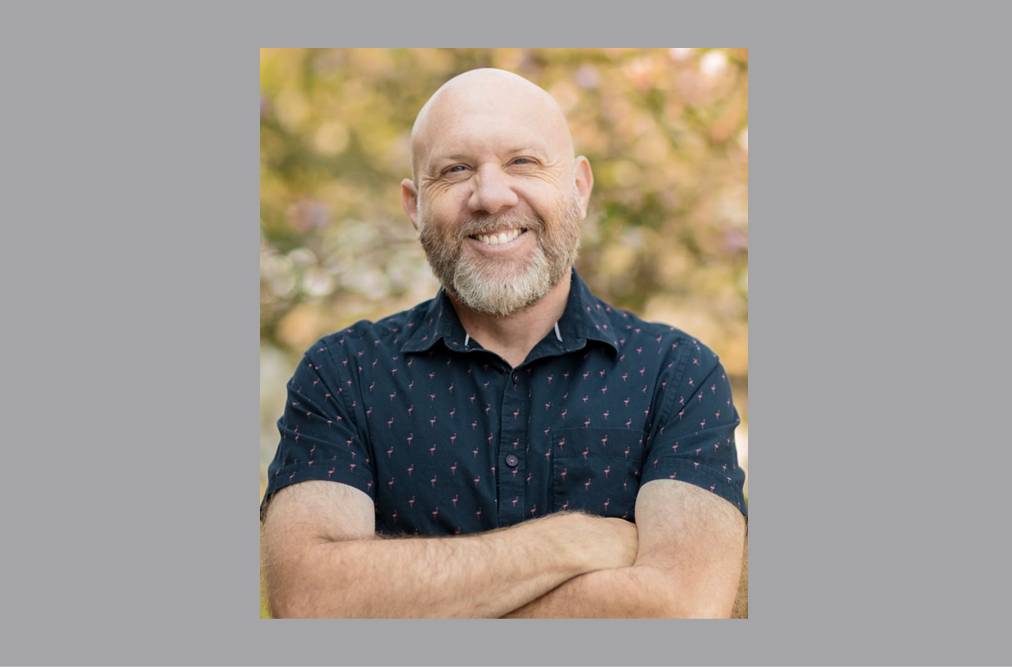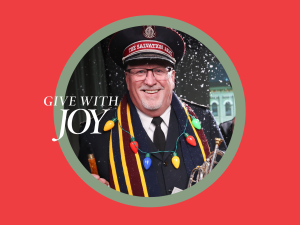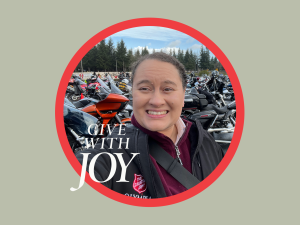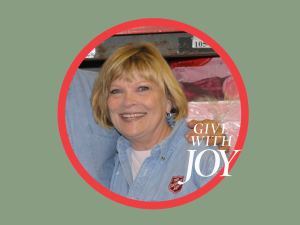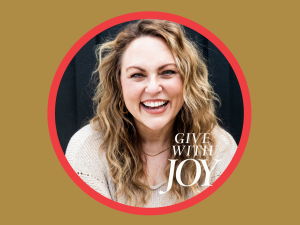Anxiety.
We all have it.
And it’s not always a bad thing—it’s a natural response to facing the unknown that can protect us.
But it can also go too far.
The American Psychological Association said in late 2020 we’re facing a national mental health crisis that could see serious health and social consequences for years to come. According to the Anxiety and Depression Association of America, 1 in 5 American adults are affected by an anxiety disorder—that’s some 40 million people.
And yet, freedom from anxiety is learnable.
That’s what Jason Cusick will tell you.
He’s the Pastor of Journey of Faith in Southern California. Formerly a hospital chaplain, he’s passionate about the connection between faith and wellness.
He has a new book—“The Anxiety Field-Guide: Healthy Habits for Long-term Healing”—and is on the show today to share his own experience with anxiety and how to effectively engage it.
Show highlights include:
- More of Jason’s story and what led him to who he is today.
- More about his new book, The Anxiety Field-Guide: Healthy Habits for Long-term Healing, and what he hopes people get out of it.
- What anxiety is and who it affects.
- How we can face uncertainty well.
- Myths to be aware of about our thoughts and feelings.
- More on the role of self-acceptance.
- The role of faith in fighting anxiety.
- Freedom from anxiety is learned by doing and Jason’s favorite example of an action step to try.
- Why it’s key to engage anxiety rather than avoid it.
- His best advice and encouragement for anyone struggling with anxiety today.
Listen and subscribe to the Do Gooders Podcast now. Below is a transcript of the episode, edited for readability. For more information on the people and ideas in the episode, see the links at the bottom of this post.
* * *
Christin Thieme: Well, Jason, welcome to the Do Gooders Podcast. Thank you so much for being here today.
Jason Cusick: Yeah, thanks so much.
Christin Thieme: As we start out here, can you share a little bit about your story, maybe some of the highlights of who you are and what led you here today?
Jason Cusick: Yeah, for sure. Thanks so much. I grew up in a somewhat regular home in Southern California, but I noticed early on in my family, my mom has been a self-professed clean freak, very organized, very detailed, everything had its place. So I grew up in a home where there was a lot of pressure to have things done in a certain way. And early on in my life, my brother and I used to tease my mom about this. We also used to tease her that, when we left the house, she had to check the lock five or six times, or she had to organize things in a very specific way.
And we slowly started sensing, maybe there’s something else going on. My mom lately has said she probably has undiagnosed obsessive-compulsive disorder. Over the years, I’ve recognized, I grew up in a home with a very anxious parent. And I think either I caught some of that in my body chemistry, in my brain chemistry, or I learned it. And I never really considered myself an anxious person, but as I got older and older, I noticed I was just getting a little bit more anxious and nervous about things. And all of it culminated when I stepped into this new position that I’m at at the church, being a lead pastor at our church.
And I think the weight of responsibility and some people-pleasing tendencies all culminated and really brought me to a crisis point. I was having insomnia and panic attacks, and over a couple of years, people started telling me things they were observing about me. And I realized I am an anxious person and I’m struggling with anxiety. And I had never really thought about it before, or even understood that before. And so, the last few years have been me saying, “Okay, let me take a deep dive into this. Let me look at this issue, try to understand it in myself so that I can also help other people look into it.”
Christin Thieme: And you’ve done that in great detail now with your new book. It’s called “The Anxiety Field-Guide: Healthy Habits for Long-term Healing.” I have to say it seems perfectly timed. I can’t tell you the amount of memes I’ve seen and the conversations I’ve had where it just feels like we’re collectively at the edge of our anxiety rope. Can you share a little bit more about this book and what you hope people will get out of it?
Jason Cusick: Yeah. While I was going through counseling, I took a lot of notes about specific things that I was learning about myself and things that I was reading, things that really stuck with me. And I kept them on the Notes page in my phone so that anytime I needed just a quick reference to a skill or an idea or a topic, I could just go to it very easily. And I found myself going to about the same 30 things. And I thought I should just write these out.
And so, during the lockdown, the COVID lockdown, I got up early in the morning and just started writing small devotionals for myself, little short chapters that I could go to. And I actually talked to my oldest son and I said, “I think I should put these into a book form.” And I said, “It’s like a field guide for me. What should I call it?” And he was like, “Why don’t you just call it that?” And I was like, “Okay, good idea.”
Christin Thieme: Good talk.
Jason Cusick: Yeah, it was great. But I think what I discovered in the process is there’s over 200 million people right now that are struggling with anxiety or anxiety disorders. And anxiety’s actually incredibly treatable and manageable. And there’s a lot of hope. We don’t have to live with the levels of it that we have, even though the culture is nurturing some of that. We live in a culture that feeds us things to be anxious about. I think no matter where the culture is going, no matter what’s happening in our world, we’ve got to find a way to manage this better. It’s actually a golden time to address this topic and help us all help each other.
Christin Thieme: Yeah. Can we back up for a second and maybe you can share what exactly is anxiety? I mean, this is a word we all hear all the time, but what is it, and is it always a bad thing?
Jason Cusick: Yeah, that’s a great question. My best understanding of anxiety is anxiety is our automatic response to a perceived threat. And it’s actually built into our body. It’s like fear, and fear is not all bad. I mean, if I was standing in a dark room and you walked in and I jumped out at you and scared you, your eyes would immediately dilate, your heart rate would go up, adrenaline would come out of your adrenal glands to prepare you for a fight or flight or freeze response. So anytime we’re afraid, our bodies have been designed to respond for self-protection. So that’s good. That’s a good thing.
I mean, it would be bad to live in a world where you weren’t afraid of anything. We would get hurt. So fear and anxiety are actually good and it’s normal. The problem is sometimes our brain tells us to be anxious or afraid, and then when the threat is gone, our brain doesn’t turn off, or sometimes that alarm in our brain to be anxious or afraid goes off and there’s actually nothing to be afraid of. And that’s when we get into the unhealthy side of anxiety or fear. All of us have anxiety, but sometimes, it can become more disabling to us.
And so, getting well and healing with anxiety is learning to understand what’s going on inside of our body and how to deal with our thoughts and our feelings and how to face uncertainty in life, which is at the core of anxiety. Anxiety is an intolerance to uncertainty. How do I deal with the things that I don’t know about?
Christin Thieme: Yeah, and it’s interesting because we can’t avoid uncertainty. We all face unknowns and uncertainties in life. And so, if anxiety’s our natural response to facing the unknown, how do we do it well?
Jason Cusick: Yeah, I think it goes back to culture. We’re in an information-rich culture, and we’re told if there’s something you’re wondering about, you can find the answer to it. In fact, even some of our faith communities overemphasize certainty over uncertainty. When you think about faith communities, faith communities should not only help us be sure and confident in the things that we can know, but faith communities should give us the ability to embrace mystery and uncertainty.
One of my favorite Bible verses is from the Old Testament, the Hebrew Scriptures, it’s in Deuteronomy 29:29, and it says, “The secret things belong to the Lord and the things that are revealed belong to us and our children.” And that’s an interesting idea that there are certain things that we know, and those are revealed to us and we can use them and we can pass them onto our kids, but then there’s also things that we don’t know, and we will never know. And those things belong to God. And I think there’s this healthy balance with how can I be sure of some things and be okay with not knowing others?
I think that great serenity prayer that we use in recovery circles echoes this idea of embracing some trust and some peace when there are things I can’t understand, and knowing the difference between the things I can understand and control and the things I can’t understand and not control. And of course, some of us were raised in homes where maybe we weren’t even helped in handling uncertainty. Everything needed to be understood, you had to perform, you had to have an answer for everything. The phrase, “I don’t know” was discouraged.
And so, if we were raised in an environment like that, we have an intolerance to uncertainty. And so, when uncertainty comes, we get anxious in the wrong ways. We panic, we start saying terrible things to ourselves. And so, I think being able to embrace uncertainty as a reality and developing a little bit more comfort with being able to say, “Yeah, I don’t know.” And for people with anxiety, this is the hardest part, because when we’re anxious, there’s a tendency to say, “Let me just think about this more or pray about this more or do something. And if I do the right thing or pray the right thing, or think the right thing, then this anxious feeling will go away.”
And that’s at the heart of obsessive-compulsive disorder. “I have an uncomfortable feeling. So let me do this compulsion to get rid of this feeling.” But we have to be very careful about trying to extinguish thoughts and feelings, that it’s probably not a good approach because we’re going to have thoughts and feelings that just pop up in our mind, that are not easy to get rid of. Anxiety’s about being able to maybe just be okay a little bit and learn to tolerate some discomfort in our hearts and in our minds.
Christin Thieme: You write about some of the myths that we need to be aware of when it comes to our thoughts and feelings. Can you share a little bit more about these?
Jason Cusick: Yeah. I can say probably the ones that were the biggest aha moments for me, one of them is this myth that your thoughts and your feelings are the real you. We live in a somewhat psychologically oriented culture, but more pop psychology. You just read something and hear that it’s true. I think there’s this myth that if you have a thought or feeling, then somehow that subconsciously represents your true desires, and that you need to think about this a lot and get to the bottom of it.
One of the things I remember, I went to Las Vegas years ago and I went into the … was it the Luxor Hotel, the one that’s like a pyramid there on the strip? And I remember I went up there and when you get to the top floors, you can overlook the lobby. So you get up really toward the top there. And I remember we went to the top floor so we could look into the lobby to look at the floor of the casino. I got up to the edge and I had that weird feeling, like, “What if I fell off of here?”
Do you ever get that when you’re at the top of something, you go, “Oh, what if I fell off, or what would it feel like to fly, or what would it feel like to fall?” And maybe I’m alone in this, but I know some people, they get that feeling. I moved away from the railing and I immediately thought to myself, “Do I want to kill myself? Why did I think about that? I can’t fly.”
Christin Thieme: Yeah, why would you think that?
Jason Cusick: Right, exactly. And we know there’s research done that actually having thoughts of what it would be like to fall when you’re on a tall height is actually a normal thought that pops up into people’s minds. That’s not an unusual thought and it’s not suicidal. That thought or feeling doesn’t represent my wishes. That’s a thought or feeling that popped into my mind. That doesn’t represent the real you. Christin, you probably have some times where a thought or a feeling popped into your mind. You’re like, “Where did that come from?”
And it’s not you. It doesn’t represent your values. It doesn’t represent what you’re going to do, but our brain is always generating thoughts and feelings. And it’s our job to evaluate those and decide if they are worth considering or not considering. I think about even just the idea of dreaming. When’s the last time you’ve woken up from a dream and you thought, “Where did that come from?” Well, you know what, it came from your brain, but it doesn’t necessarily represent who you really are. So it’s our job to steward our brain in a good way.
And then the other myth that relates to that is that you’re supposed to believe everything you think or feel. And I think for me, with anxiety, that’s been the big turning point. Just because I feel it or I think it doesn’t mean I have to believe it. And we know that because there’s times where I’ll just be like, “Oh, my gosh, everybody’s against me.” That’s actually not true. And the more I believe that, the more I might get my brain used to generating that thought again.
One of the stories in the Bible that really resonates with me is the story of Elijah, and Elijah has this amazing spiritual encounter of doing a great thing for God, and then plummets into a depression. And this Hebrew prophet goes to a cave and he says, “I’m all alone and I just want to die because I’m the only one left in the world that you’re using, God, and no one’s with me.” And after some time of eating and sleeping and resting, God tells him, “You’re not alone. I have a lot of other people. You just haven’t met them yet.”
But Elijah has this genuine thought and feeling that he’s the only one out there, and it just wasn’t true. And dealing with anxiety means also stopping and identifying our thoughts and feelings and coming up with a way to evaluate them. Are these accurate? Are these true? And then what do I do with what I’m feeling and thinking?
Christin Thieme: Yeah. And how many people can relate to that feeling of feeling like they’re on their own? I like the way that you phrase it in the book, that it’s important to observe our thoughts and feelings before owning them. Those are two separate actions.
Jason Cusick: Yeah. I think we’re used to identifying with our thoughts and feelings right away, because they’re very familiar. They come from my own brain. It’s not like somebody else suggested them. It’s from inside me. We’re used to believing our brains. If you look outside and the sky is blue, then you go, “Oh, the sky is blue because I just saw it or observed it.” We’re used to believing our brain. And for the most part, the majority of our life, God has designed us to believe what we think and feel. But feelings in particular are a little bit more challenging. They’re much better subordinates than they are masters. So it’s good to check them and double-check them a little bit.
Christin Thieme: What is the role in addressing anxiety of self-acceptance? You write in the book, “A lot of our anxiety comes from our well-intentioned desire to be a good person and make good decisions.” Can you share more about that?
Jason Cusick: Yeah. I think anxiety is often a boogieman for people. “Oh, you’re anxious? Oh, that’s bad. You shouldn’t be anxious.” And then of course, we’ll find Bible verses that’ll back it up. Jesus said, “Do not be anxious. Do not worry,” things like that. I’ve been in churches where people have said, “Worry is a sin. Fear is a sin.” And so, I think it’s very easy for us to have shame attached to things. When Jesus says, “Do not worry,” he’s not saying don’t have worry. He’s saying stop being worried, and then of some ways to do that.
I think that the thing that’s helped me the most is just starting with a certain normalization, to just say, “Look, worry and anxiety or part of life. Now, I can move in the direction of getting better, but I’m not going to move in the direction of getting better by being upset with myself for being anxious or being judgemental of myself or others.” And a lot of that does come back to some of the self talk that we’re doing in our own brains, what I tell myself when I’m anxious or I’m worried.
And the question I ask myself is, “Is how I’m talking to myself, not only is it accurate, but coming from where I’m coming from, from a faith perspective, are the things that I’m saying about myself, are those what God is saying about me, or are they opposite of what God is saying about me?” Because there are times where I’m saying things about myself, that God’s like, “That’s the exact opposite of what I’m saying about you.” If I go, “Oh, I failed and I’m a horrible person,” I believe God’s like, “I don’t think you’re a horrible person, and your failure actually gives you an opportunity to learn to do something differently.”
Somehow we have to learn to make sure that what we’re saying to ourselves echoes what God is saying to us. And some of us, that self talk in our brain, we’re just repeating what our parents told us or what our parents didn’t tell us or what some unhealthy religious person told us at some point. So that goes to the cognitive-behavioral process of getting well, of let me examine my thoughts and my behaviors. Let me move in the direction of having them more line up with who God has made me to be, rather than who I’ve become over the years.
And that’s a bit of a process because we’re really rethinking our understanding of ourselves. But I have a default negative voice inside of me that doesn’t help. That’s a negative, critical voice that is accusatory, but that’s been a huge part of that normalization and that acceptance. One of my mentor’s names is Brady Boyd and he wrote a great book called “Speak Life,” and it’s all about how we speak, the words we’re using with ourselves, what we say to God, what we say to ourselves, what we say to other people and learning a little bit more about how to speak life, rather than speaking death and worry and fear and anxiety and negativity. So that’s been really a big process for me.
Christin Thieme: Yeah, and the conscious relearning to do that, because like you said, it’s such an automatic thing to go to the negative.
Jason Cusick: Yeah, and like I said earlier, if anxiety is an automatic response to a perceived threat, a lot of these responses are automatic. Like I said earlier, if you walked into a dark room and I scared you, you wouldn’t say, “Okay, brain, tell my heart to beat faster.” That just happens. And so, some of that self-talk that we have in our head, it just happens. The tape plays and we almost have to jump in and either … well, first we jump in by just observing that that negative self-talk happened and that that inaccurate self-talk happened, then we have to slow down and say, “Okay, what was the content of that message? And then how can I begin redoing that message into something that’s different?”
And that’s a bit of a process, but again, it’s very learnable. And what we’re learning from neuroscience is the brain is very malleable. We have things that we can relearn and do new ways of thinking that can be formed over time. And that’s good news. We don’t have to continue to stay in the anxiety that we have. We can change.
Christin Thieme: Yeah. And throughout the book, you provide all different things that we can try, action steps, things that we can do to try to fight anxiety. Is there one example you can share, something tangible that you find particularly helpful?
Jason Cusick: Yeah, the one thing that probably helped me from the beginning and I still use regularly is this method called the two-screen method. Scott Simonton developed this method, and it basically is you imagine that you have a TV screen in front of you and that TV screen is showing you life and good things that are happening and what you need to do and what you need to stay focused on. And to look at that TV screen in front of you is the screen that your creator wants you to keep your eyes on.
But there’s another screen, maybe to your left side in your peripheral vision, that is just continually running content that is not helpful to you. It’s inaccurate, or it’s focused on your fears and your anxieties and your phobias and all the things that trigger you uniquely. Our tendency is, when that side screen turns on, we just turn our chair and give our full attention to it. And he has a whole book on it, “Freedom From Anxious Thoughts and Feelings.”
In this method, what you do is when that side screen comes on, you can turn and look at it and acknowledge it, but then you refocus back on your front screen. Sometimes, what we do is we either turn to the side screen and focus on it or we try to ignore the side screen. This is when somebody says, “I’m really anxious about that.” Don’t think about that. Well, now, I’m more anxious.
Christin Thieme: Yeah. Now, that’s all I’m thinking about.
Jason Cusick: Exactly. What do we do? Well, you turn to that side, acknowledge it, you observe it. “Oh, that’s interesting. Yeah, you’re right, that is something I worry about. Now, let me focus on what I can deal with.” Now, for a while you might get a crick in your neck because you’re going back and forth all the time. But over time, we’re retraining our brains to stay focused. It’s a very similar instruction from Christian wisdom in the New Testament where Paul, one of these great leaders in the New Testament, he says, “Whatever is true, whatever is good, whatever is noble, whatever is praiseworthy, think about these things.”
When I’m in an anxious moment and those anxious thoughts and feelings come to my mind, I’ll acknowledge them and look at them. “Oh, yep, here’s that thing that I tend to be worried about. Let me focus over here again,” and then it pops, “Oh, but what about this?” “Yep, okay. Yep, I’m acknowledging that, but let me focus on this.” It’s recognizing, accepting that anxiety is part of our lives. We don’t have to extinguish it and we don’t have to ignore it. There is an alternative, and that is we can acknowledge it, we can observe it, and we can try to focus on the things that our creator wants us to focus on, those life-giving things that’ll help us.
Christin Thieme: I love that visual. It’s such a simple way to think about it, but I can see how that’s so helpful to really separate the two sides. Of course, get a copy of this book, “The Anxiety Field Guide,” that’s step one. But after that, what’s your best encouragement for someone who’s listening today, who maybe is really struggling with anxiety? What would you say to them?
Jason Cusick: I think my number one piece of advice would be to invite God into your worry. I think sometimes we think, “If I can only get out of this anxiety, then I can live the way I’m supposed to. If I can only get rid of this feeling, then I will feel better,” or for people of faith or people looking into faith, “If I can only escape this anxiety, I can have a relationship with God.” I think it’s exactly the opposite. I think we can invite God into that worry and God can help us move through it. I think about that wonderful Psalm in the Bible, Psalm 23, that says, “Even though I walk through the valley of the shadow of darkness, you are with me.”
It’s interesting that he doesn’t say, “If I can get out of this valley, I will find you.” No, even though I’m in it, and there’s the assumption that I will be in it, you are with me. And that was a big learning curve for me because I was like, “God, get me out of this so I could have a better relationship with you.” It was a big growth area to say, “God just be with me in it.” And the person that probably modeled this for me best was Jesus.
We have a beautiful picture in the New Testament of Jesus the night be before he was killed, and he’s in a garden and he’s praying and he’s just agonized and anxious and stressed. And he’s just praying that God would be with him. And I think if that worked for Jesus, maybe it can work for me. I’d like, “God, be with me in this.” That’s probably the main piece of advice, to invite God into our worry. Anxiety is an invitation to get closer to the God who made us and loves us and is always with us.
Christin Thieme: Well, Jason, thank you so much. Thank you for sharing. Thank you for this very helpful tool for all of us. And thank you for being with us today on the show.
Jason Cusick: Thanks so much. Thanks for all the work you’re doing and thanks for the opportunity for me to share with you.
Additional resources:
- Read “The Anxiety Field-Guide: Healthy Habits for Long-term Healing” by Jason Cusick.
- Read “Speak Life: Restoring Healthy Communication in How You Think, Talk, and Pray” by Brady Boyd.
- Tell people who you are, what you’re passionate about and why you care. Find confidence, healing or simply the satisfaction of finding your voice, owning your story and sharing it with others. Sign up for our free email course and get started today.
- Want more content from Caring Magazine? Follow us on Instagram! Get caught up with the latest stories, podcasts and more to inspire goodness in your life.
Listen and subscribe to the Do Gooders Podcast now.








